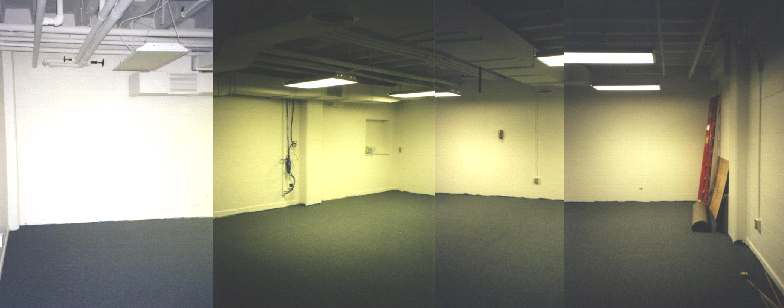Reverberation Time in a Small (but very reverberant) Room
Discovering the Empty Room
The data, plots, recordings, and photographs on this page were collected and created while I was a member of the Physics faculty at Kettering University, Flint MI. Sometime around February/March 2001 I was walking out of the ground floor of the Academic Building to the faculty parking lot to drive home. As I was walking down the hallway, I noticed a normally locked door was open and saw that the open door provided access to an empty room. This room used to serve as the athletic crib connected to the old gymnasium (which was, itself, badly in need of repair and was closed to access while being used as junk storage while waiting for renovation).
My curiosity aroused, I went through the open door discovered that this empty room had some remarkable acoustical properties (including a surprisingly long reverberation time). So, I immediately ran back upstairs to my lab, called my wife to tell her I would be late for supper, and grabbed some equipment to make some recordings of the reverberation time -- expecting that this would be my one chance to have access to this temporarily vacant (and normally locked) acoustic space.
A few weeks later, I noticed that the door happened to be open once again as I was leaving and this time I noticed that carpet had been laid in the room. So, once again I called my wife to say I'd be late for dinner again, brought down the recording equipment and made some new recordings with carpet on the floor. The carpet noticeably reduced the reverberation time. Unfortunately I was not able to gain access (even after asking) to this space once the renovations had been completed and desk carrels and furniture had been installed.






